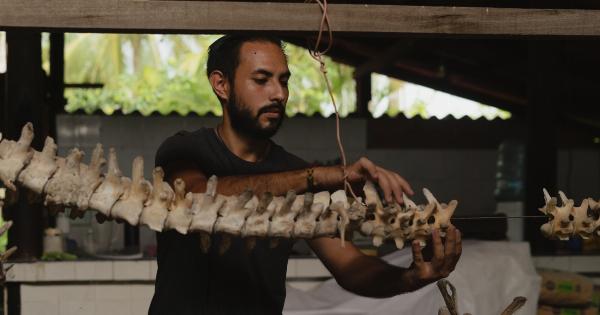Dance is not just a beautiful art form; it also has numerous benefits for our overall health and well-being. One area where dance can have a significant positive impact is joint health.
In this article, we will explore how dancing can benefit your joints, whether you are a professional dancer or simply enjoy dancing as a hobby.
1. Increased Flexibility
Dance requires a wide range of motion in various joints of the body. Regular dance practice helps to improve flexibility, making your joints more supple and less prone to stiffness or injury.
The repetitive movements involved in dance gradually elongate the muscles and tendons surrounding the joints, increasing their overall flexibility.
2. Improved Joint Strength
Dancing engages different muscle groups, including those that support and stabilize the joints. As these muscles get stronger, they provide better support to the joints, reducing the risk of joint-related injuries.
Strong muscles also help to improve your balance and stability, further protecting your joints from undue stress or strain.
3. Enhanced Joint Stability
Many dance styles require precise footwork and quick changes in direction. To perform these movements accurately, your joints need to be stable.
Through dance, you can develop better joint stability by strengthening the ligaments and tendons that surround them. This improved stability can prevent joint dislocations or other stability-related issues.
4. Increased Synovial Fluid Production
Synovial fluid is a lubricating substance found in your joints that helps to reduce friction between the bones and cartilage.
Regular dance practice stimulates the production and circulation of synovial fluid, which helps to keep your joints well-lubricated. This can alleviate joint stiffness and discomfort, especially for individuals with conditions like arthritis.
5. Weight Management
Excess body weight puts extra stress on our joints, increasing the risk of joint-related conditions such as osteoarthritis. Dance is a physically demanding activity that can help you maintain a healthy weight or aid in weight loss.
By reducing the load on your joints, dance can help prevent or alleviate joint pain and improve joint function.
6. Improved Posture
Proper posture is crucial for maintaining good joint health. Dance promotes correct body alignment, helping you develop better posture habits.
By practicing dance regularly, you can strengthen the muscles that support your spine, hips, and knees, which in turn helps to maintain correct posture and reduce the risk of joint misalignment.
7. Increased Blood Circulation
Dance is a cardiovascular exercise that gets your heart pumping and improves blood circulation throughout your body, including your joints.
Better circulation ensures that your joints receive an adequate supply of oxygen and nutrients, which are essential for their health and function.
8. Stress Relief and Joint Health
Engaging in dance is not just physically beneficial but also mentally and emotionally uplifting. Dancing helps to reduce stress levels, which indirectly impacts joint health.
High stress can lead to muscle tension and tightness, which can affect joint function. By participating in dance, you can alleviate stress and create a positive and relaxed state of mind, thus supporting joint health.
9. Improved Mind-Body Connection
Dance requires coordination, rhythm, and a strong mind-body connection. When you dance, you become more aware of your body’s movements and how it feels in space.
This heightened mind-body connection can improve your overall body awareness, allowing you to move with greater precision and control and reducing the risk of joint injury.
10. Prevention of Age-Related Joint Conditions
As we age, our joints become more prone to conditions such as osteoarthritis. Regular dance practice can help delay the onset or progression of age-related joint conditions.
By keeping your joints active and maintaining their flexibility, strength, and stability through dance, you can promote better joint health as you grow older.































